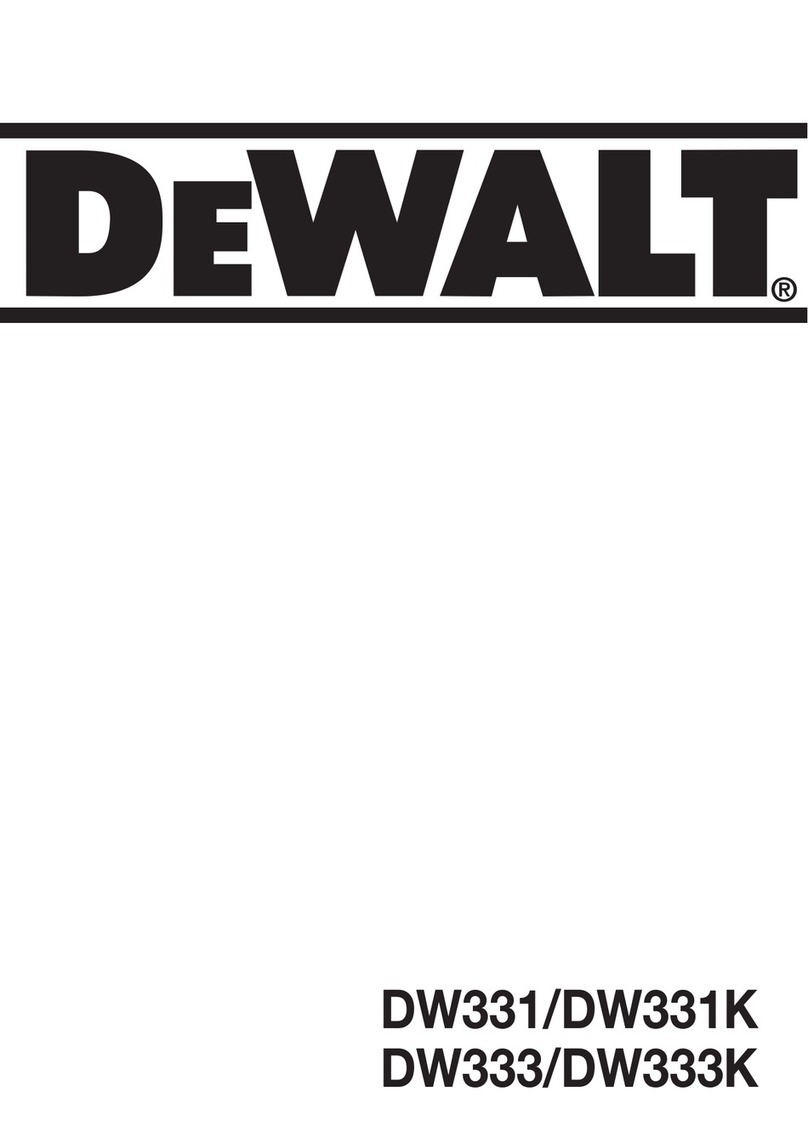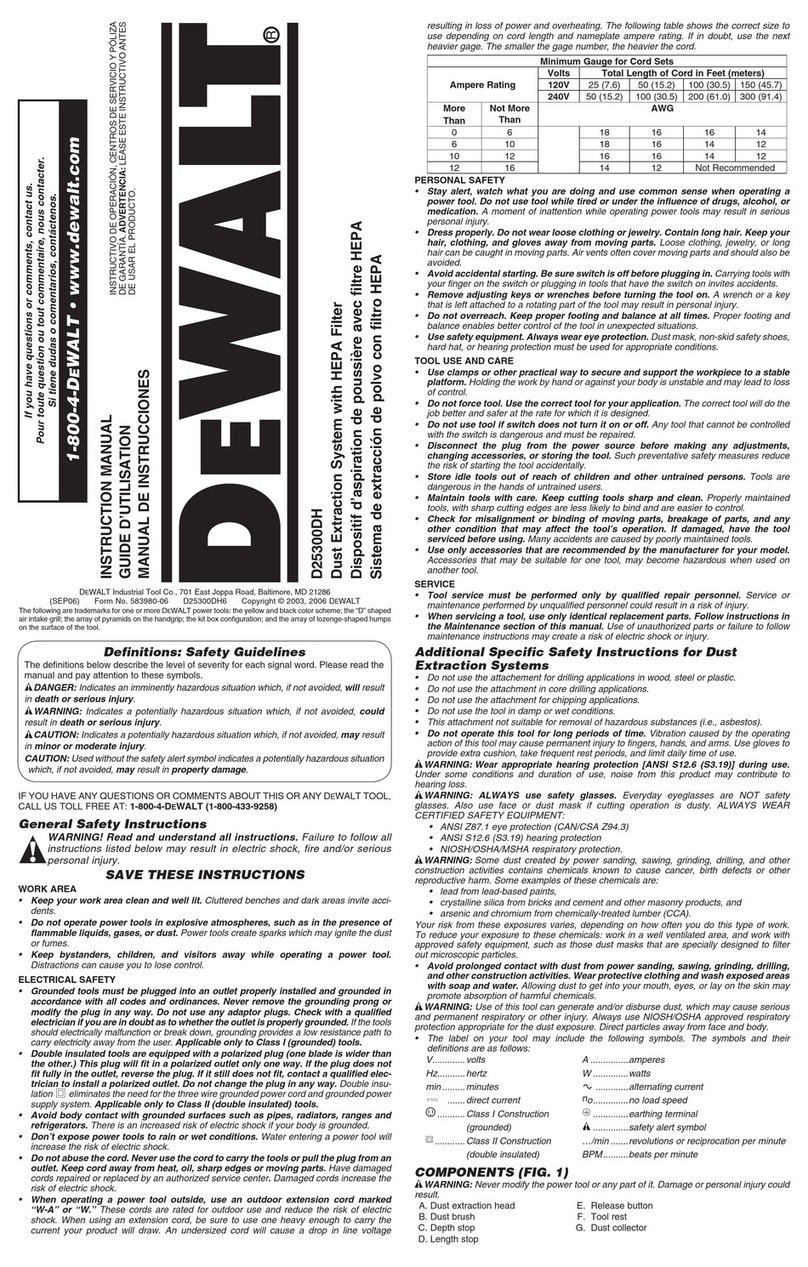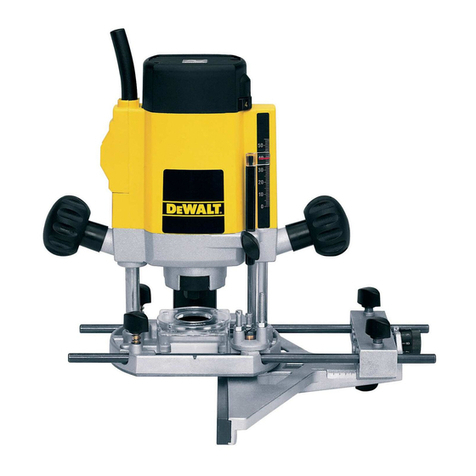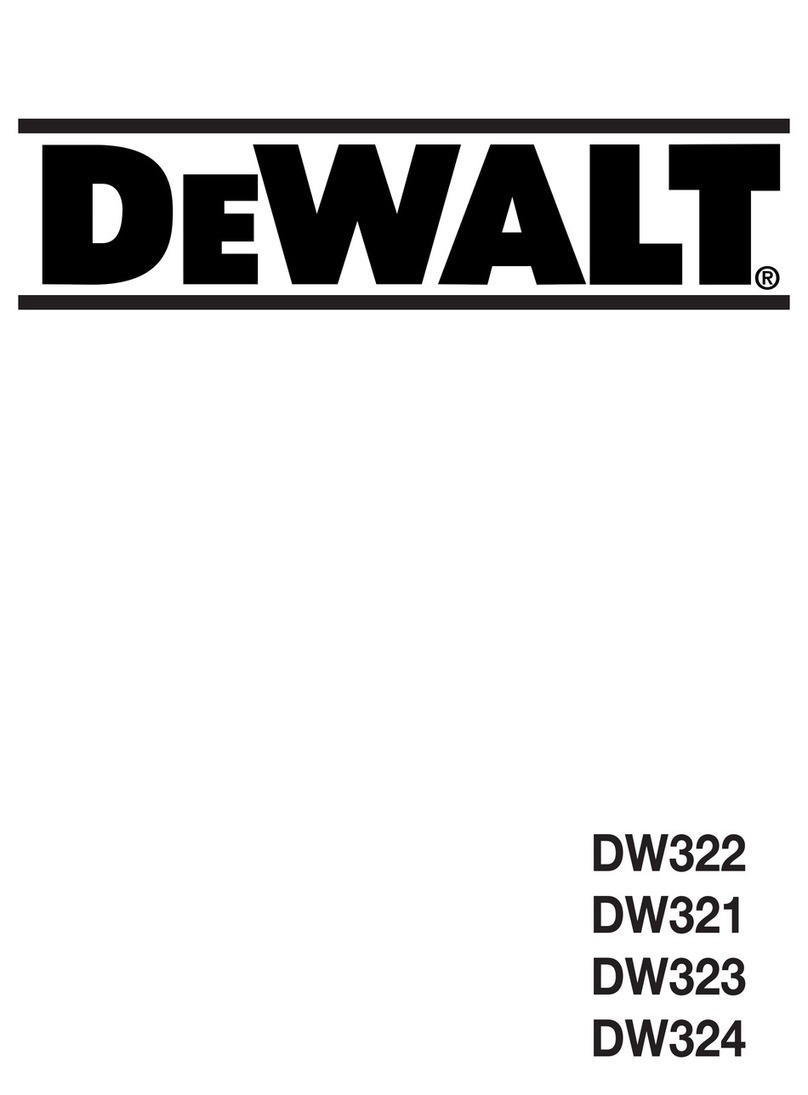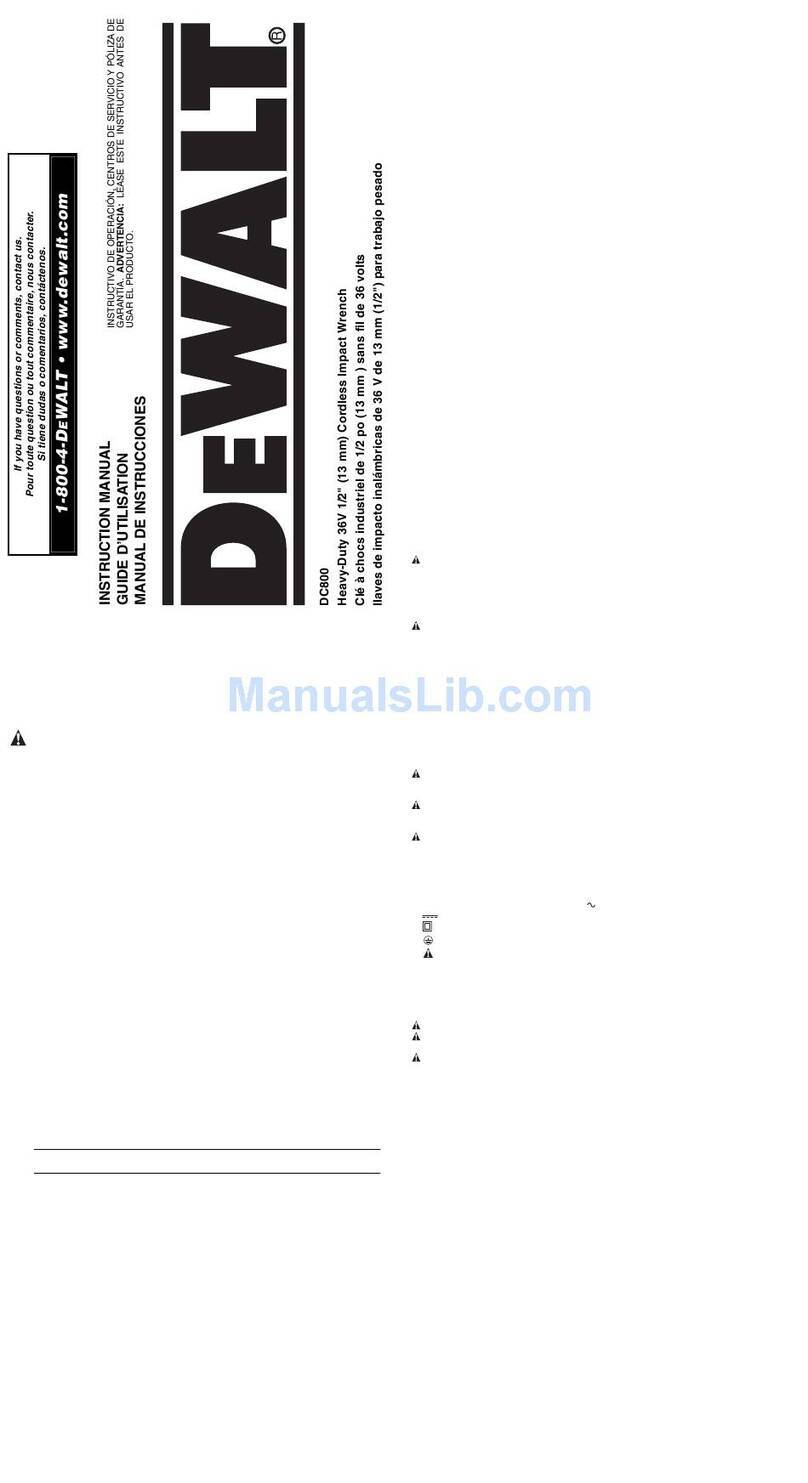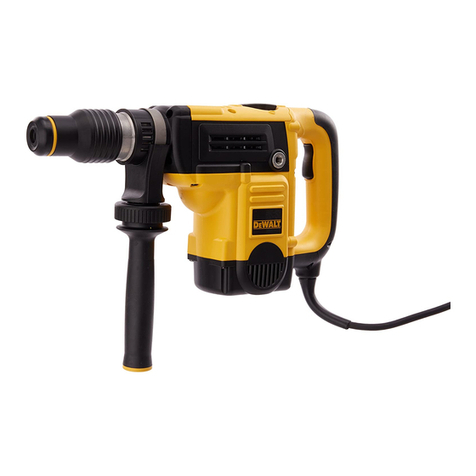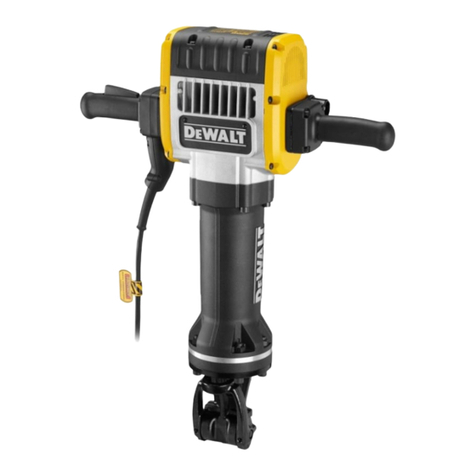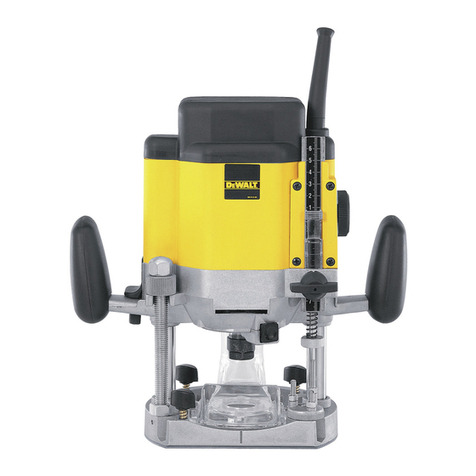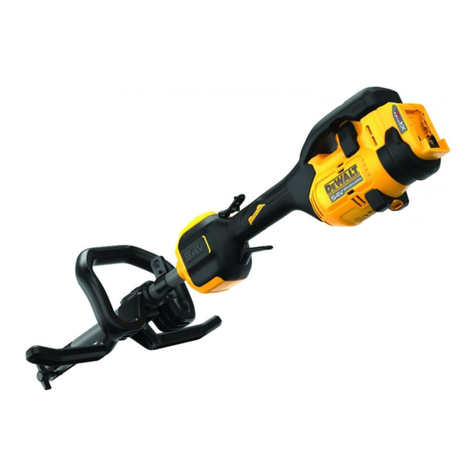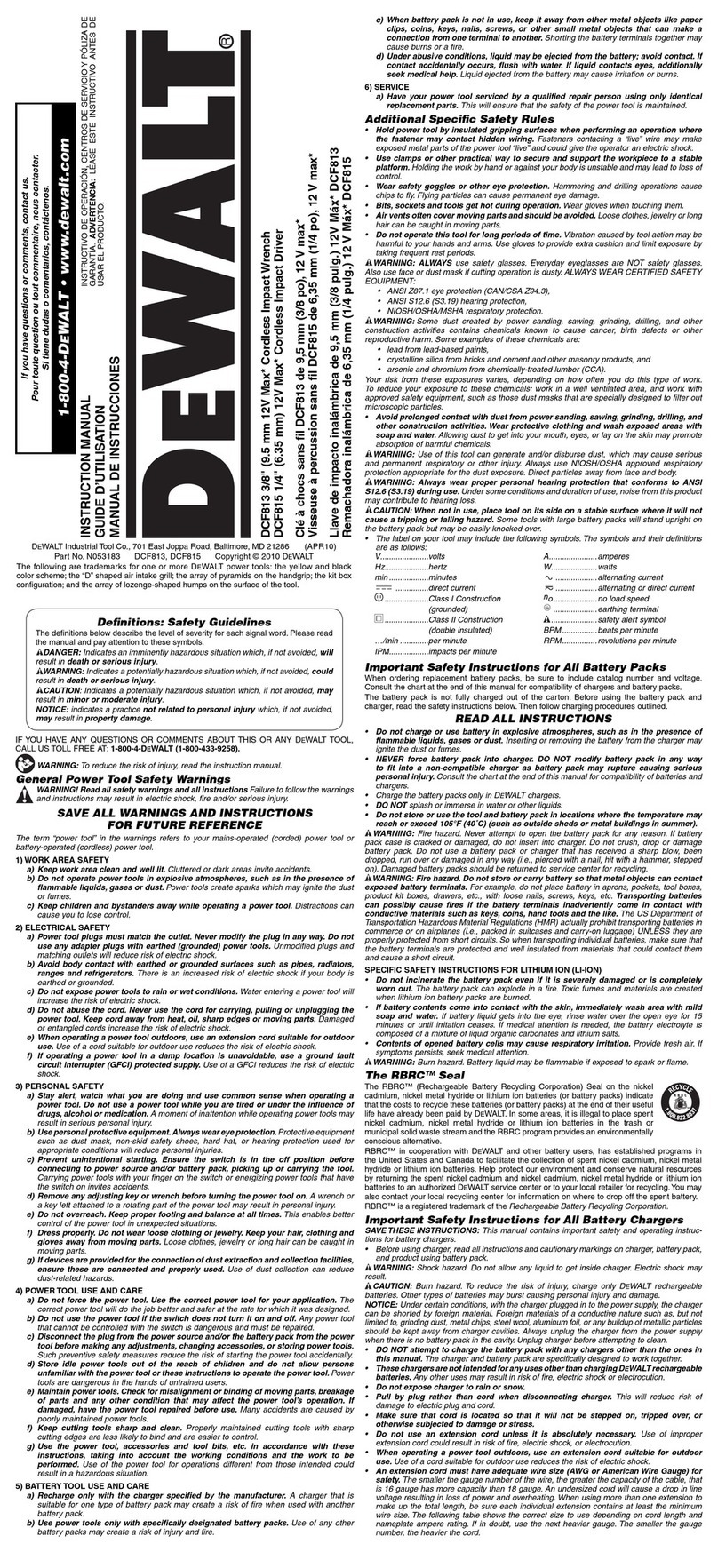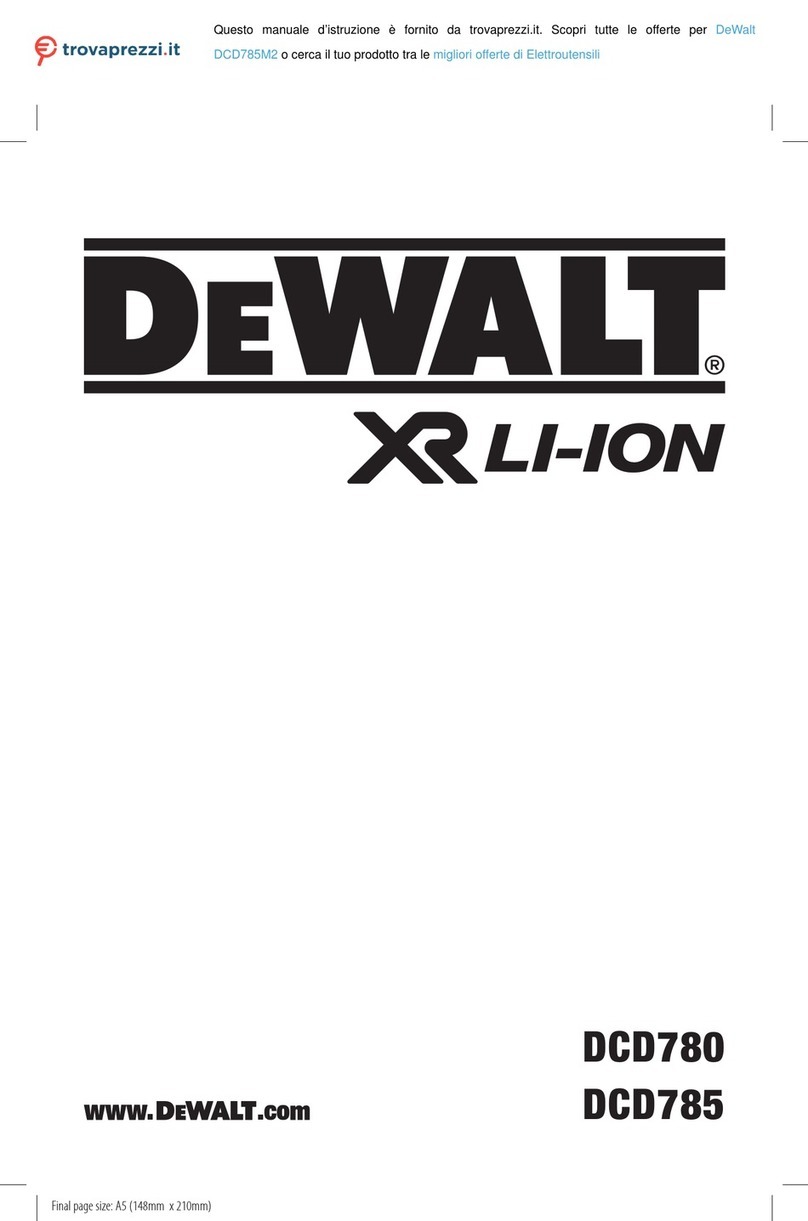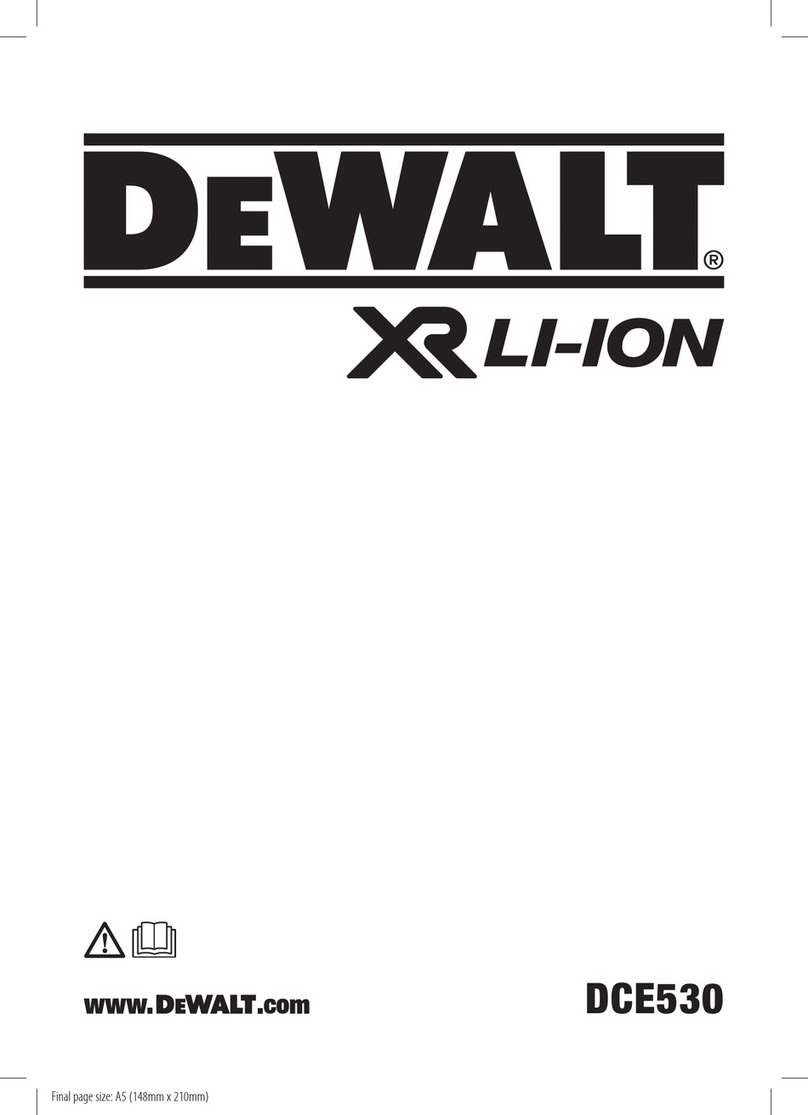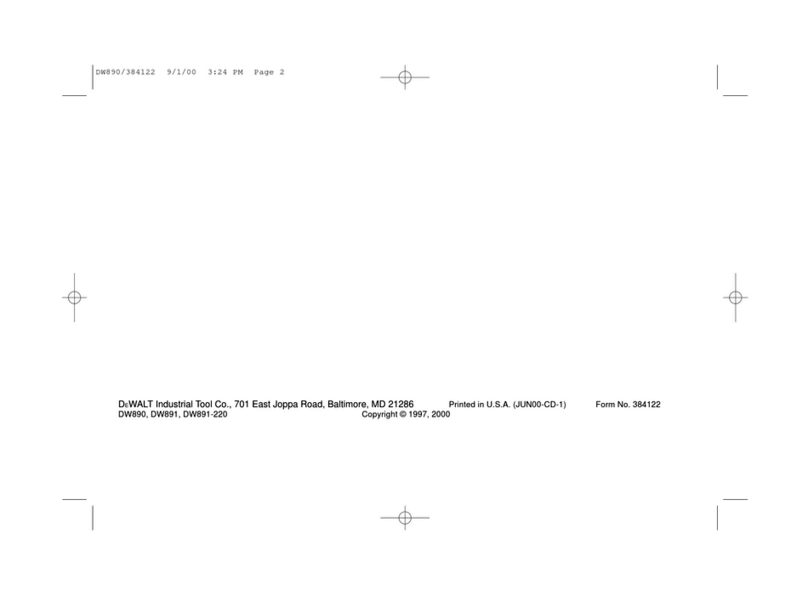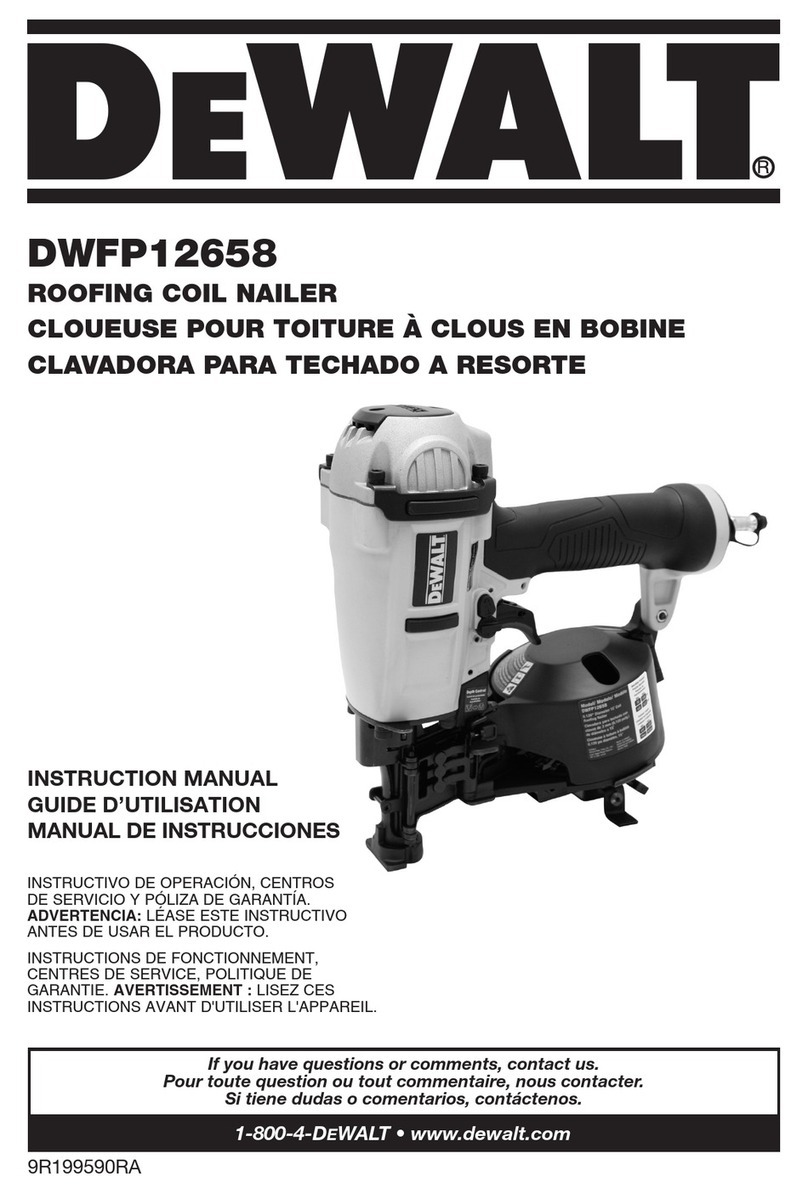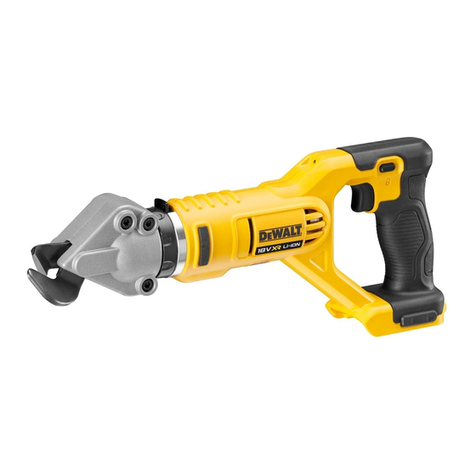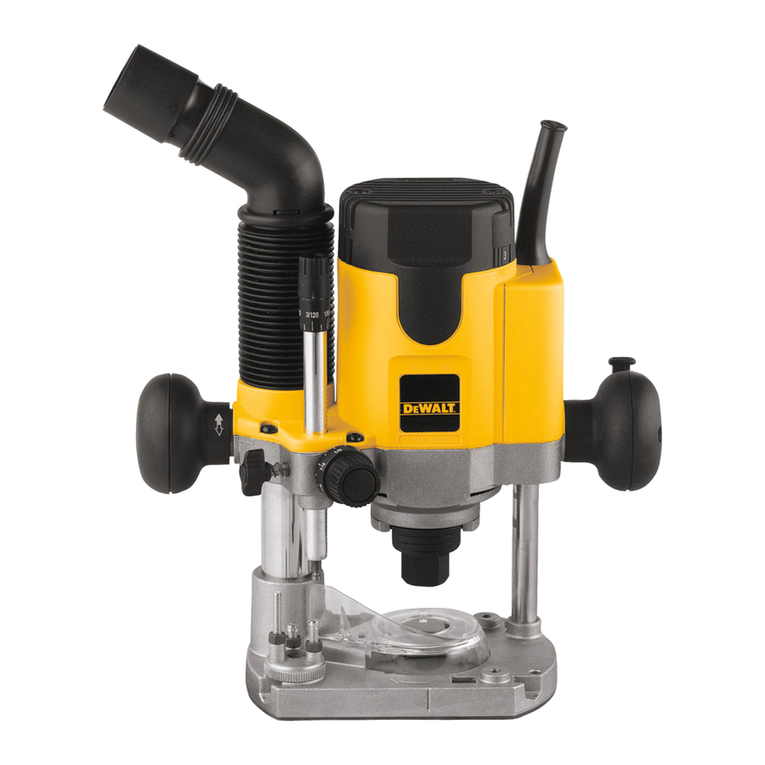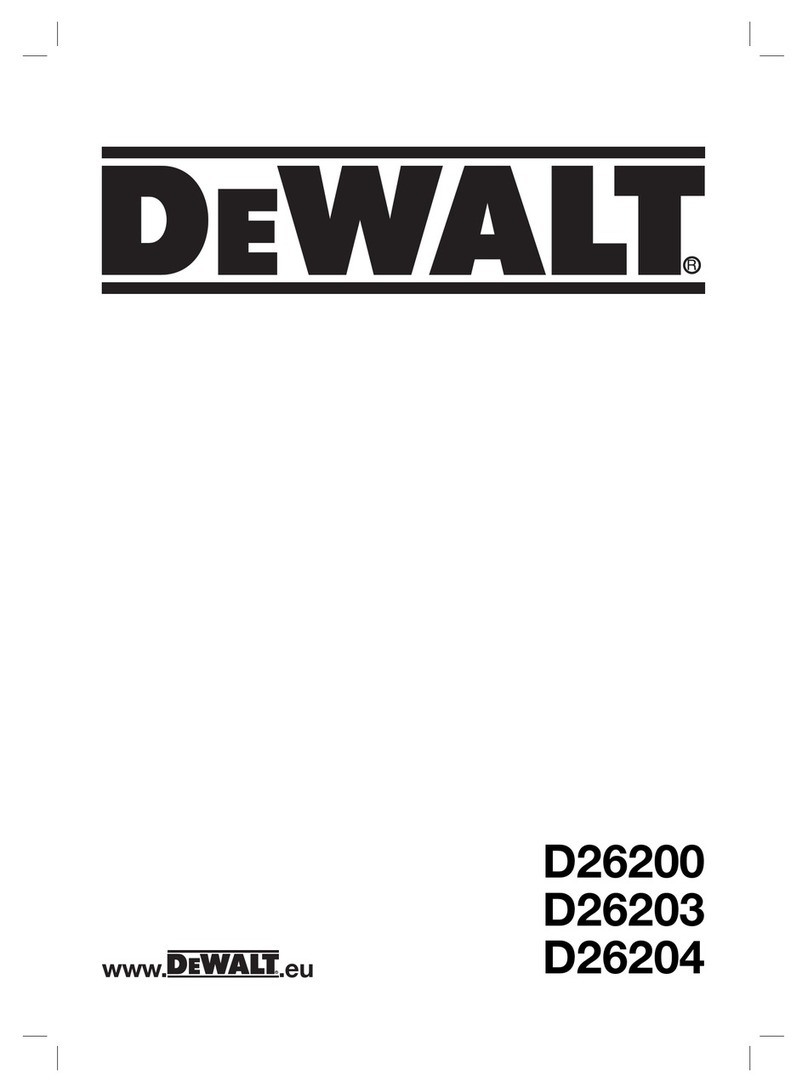ENGLISH
4
• Do not remove, tamper with, or otherwise cause the
tool or trigger to become inoperable. Do not tape or
tie trigger in the on position. Do not remove spring from
wire indicator. Make daily inspections for free movement
of trigger. Uncontrolled discharge couldresult.
• Inspect tool before use. Do not operate a tool if
any portion of the tool or trigger is inoperable,
disconnected, altered, or not working properly.
Damaged parts or missing parts should be repaired or
replaced before use. Refer toRepairs.
• Do not alter or modify the tool in anyway.
• Keep bystanders, children, and visitors away while
operating a power tool. Distractions can cause you to
lose control. When tool is not in use, it should be locked in
a safe place, out of the reach ofchildren.
• Do not overreach. Maintain proper footing and
balance at all times. Loss of balance may cause
personal injury.
• Use the tool only for its intended use. Do not
discharge staples into open air or any material
too hard for the staple to penetrate. Do not use the
body of the tool or top cap as a hammer. Discharged
staple may follow unexpected path and causeinjury.
• Always keep fingers clear of wire indicator to
prevent injury from inadvertent release of thestaple.
• Refer to the Maintenance and Repairs sections for
detailed information on the proper maintenance of
thetool.
• Always operate the tool in a clean, lighted area.
Be sure the work surface is clear of any debris and be
careful not to lose footing when working in elevated
environments such asrooftops.
• Staples must be driven straight into the material. Do
not tilt the stapler while driving staples. Personal injury
can result from ricocheted or jammedstaples.
• Keep hands and body parts clear of immediate
workarea.
WARNING: To avoid injury keep hands and body
away from the front discharge area of thetool.
• Do not use tool in the presence of flammable dust,
gases or fumes. This tool produces sparks that can ignite
gases or dust causing an explosion. Driving a staple into
another staple may also cause aspark.
• Keep face and body parts away from back of the tool
cap when working in restricted areas. Sudden recoil
can result in impact to the body, especially when stapling
into hard or densematerial.
• Grip tool firmly to maintain control while allowing
tool to recoil away from work surface as staple
isdriven.
• Be aware of material thickness when using stapler. A
protruding staple may causeinjury.
• Check the wire after each shot to make sure the
cable sheathing remainsintact.
• Stay alert, watch what you are doing and use
common sense when operating a power tool. Do not
use tool while tired or under the influence of drugs,
alcohol, or medication. A moment of inattention
while operating power tools may result in serious
personalinjury.
Additional Safety Information
WARNING: ALWAYS use safety glasses. Everyday
eyeglasses are NOT safety glasses. Also use face or
dust mask if cutting operation is dusty. ALWAYS WEAR
CERTIFIED SAFETYEQUIPMENT:
• ANSI Z87.1 eye protection (CAN/CSA Z94.3),
• ANSI S12.6 (S3.19) hearing protection,
• NIOSH/OSHA/MSHA respiratoryprotection.
WARNING: Some dust created by power sanding,
sawing, grinding, drilling, and other construction
activities contains chemicals known to the State
of California to cause cancer, birth defects or
other reproductive harm. Some examples of these
chemicalsare:
• lead from lead-based paints,
• crystalline silica from bricks and cement and other
masonry products, and
• arsenic and chromium from chemically-
treatedlumber.
Your risk from these exposures varies, depending on how
often you do this type of work. To reduce your exposure to
these chemicals: work in a well ventilated area, and work with
approved safety equipment, such as those dust masks that are
specially designed to filter out microscopicparticles.
• Avoid prolonged contact with dust from power
sanding, sawing, grinding, drilling, and other
construction activities. Wear protective clothing and
wash exposed areas with soap and water. Allowing
dust to get into your mouth, eyes, or lay on the skin may
promote absorption of harmfulchemicals.
WARNING: Use of this tool can generate and/
or disperse dust, which may cause serious and
permanent respiratory or other injury. Always use
NIOSH/OSHA approved respiratory protection
appropriate for the dust exposure. Direct particles
away from face andbody.
WARNING: Always wear proper personal hearing
protection that conforms to ANSI S12.6 (S3.19)
during use. Under some conditions and duration
of use, noise from this product may contribute to
hearingloss.
CAUTION: When not in use, place tool on its side
on a stable surface where it will not cause a
tripping or falling hazard. Some tools with large
battery packs will stand upright on the battery pack
but may be easily knockedover.
• Air vents often cover moving parts and should be
avoided. Loose clothes, jewelry or long hair can be
caught in movingparts.
The label on your tool may include the following symbols. The
symbols and their definitions are asfollows:
V.........................volts
Hz .......................hertz
min.....................minutes
or DC......direct current
